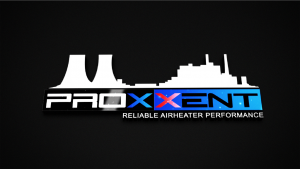Test Preparation
- Ensure representative testing ports for airheater performance testing are available and in good condition.
- If new ports are required, we recommend installing evenly spaced 150# 4” or 6” blind flange ports / flange covers at the Immediate APH Gas Inlet and Outlet Ducts (as feasible). The quantity of ports required will depend upon the distance of the straight ductwork runs upstream and downstream.
- If at all possible, combustion airflow measuring ports should be made available for calibration of the flow measuring elements and/or validation of the actual airflow rates.
- Ensure the thermocouples at the FD fan discharge, APH inlet and APH outlet (cold and hot ends) are properly working. It is important to compare the representation of the actual measurements of the measured averages to the permanent instrumentation.
- Similarly to item 4, the static pressure taps at the air and gas inlet/outlet ducts should be functionally checked, blown-out and validated / deemed accurate.
Performance Evaluation
- Measure airflow and gas flow (if feasible). Understanding airflow as well as gas flow is critical to optimizing the thermal performance of a regenerative APH.
- Conduct performance tests to gauge leakage, X-ratio, gas side efficiency (at least 2 tests and 2 loads, if feasible). This data should be considered as a baseline to evaluate the “as found” performance against actual air and gas flow measurements to compare with the thermal performance. Measurement of flue gas constituents at the APH inlet and Outlet must be representative and collected using proper methods for sampling and analyzing the flue gas constituents.
Collecting representative data is especially important when evaluating the effectiveness of the heat transfer, element performance, and/or the thermal efficiency impacts of the airheater.
Gas side efficiency should be corrected for “no leakage” and evaluated based on the expected efficiency at a given ( or tested) X-ratio. For example, a lower than design X-Ratio can lead to a higher APH gas outlet temperature and can be used as an indication for determining if there is boiler air in-leakage upstream of the APH and/or high primary/tempering airflow (cold air bypassing the APH).
In conjunction with the X-ratio checks, total combustion airflow measurement and actual furnace exit gas oxygen measurements can be used to validate the ratios of air and gas flow. While operational, the pre-outage and post outage operations, abnormal events and operating history should be considered. Furthermore, Pre and Post outage performance testing will be used to gage performance improvements to the system.
Important Variables for Performance Consideration:
- Overall System Air In-Leakage
- Flue Gas Temperature Corrections
- Fuel & Ash Analysis / Variations
- Air Pollution Control (APC) equipment
- Flue gas volume, distribution and temperature gradients
- Dew-point temperatures, actual operating temperatures, corrosion, SO 3, Impact of performance on the Air Pollution Control equipment
- Thermal gradients from hot-end to cold-end. Also, rotational characteristics of temperature from side to side.
